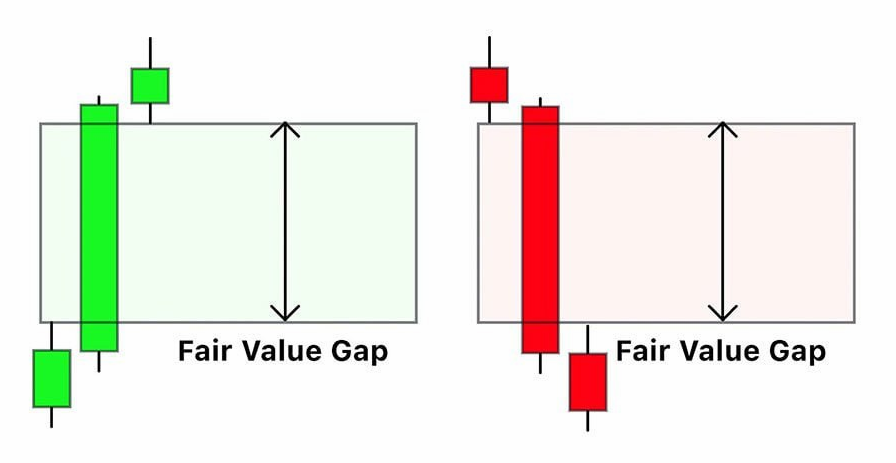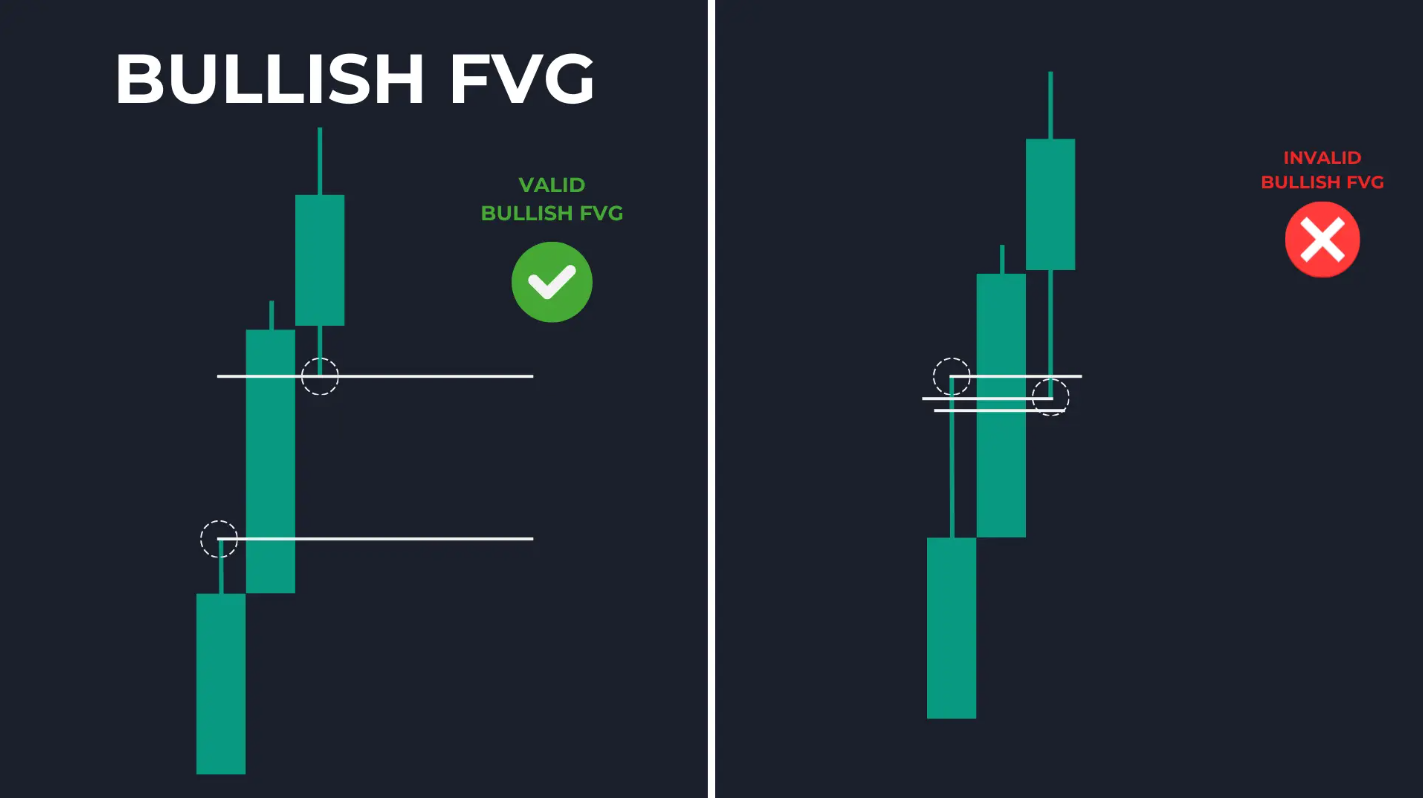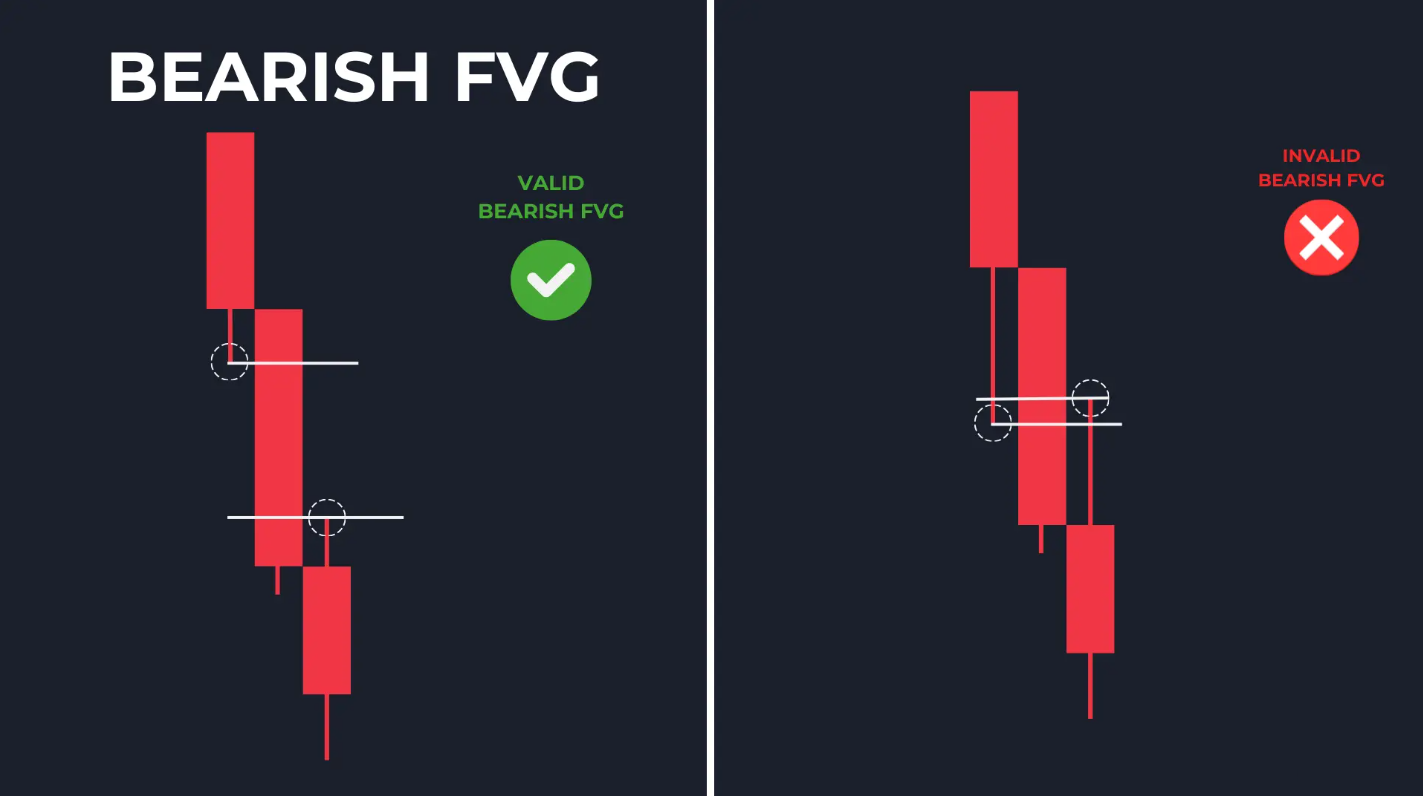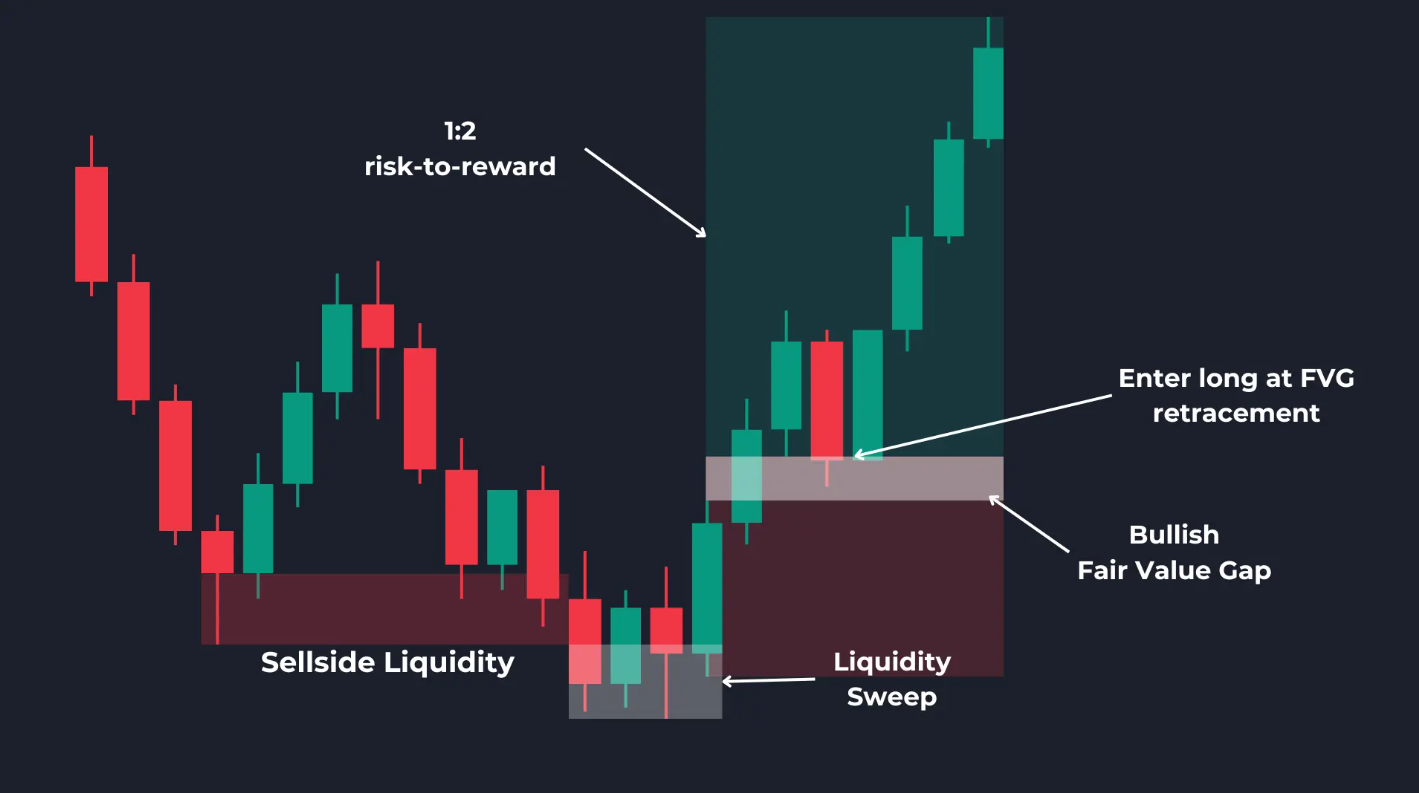TL;DR Key Takeaways
TL;DR
- A Fair Value Gap (FVG) is an imbalance in price action where liquidity was inefficiently distributed, often creating high-probability trade setups.
- Traders use FVGs to anticipate price retracements, identify key support and resistance levels, and refine entry and exit strategies.
Fair Value Gaps (FVGs) are crucial components of price action trading, helping traders detect areas of liquidity inefficiencies. When an asset moves rapidly, gaps in price action can occur, leaving behind untested levels that the market may revisit. In this article, we’ll dive into what FVGs are, how they form, and how traders can leverage them in their trading strategies. Let’s get started.
How Does the Fair Value Gap (FVG) Work in Trading?
If you’ve ever wondered “How can I use Fair Value Gaps in trading?” or “What do Fair Value Gaps indicate?”, the answer lies in their relationship with price inefficiencies. An FVG occurs when a financial instrument moves so aggressively that a three-candle formation leaves a price gap between the first and third candle, showing that price did not trade efficiently within that range.

FVGs typically indicate areas where institutional traders may step in to balance price movements, offering opportunities for entries or exits. Traders monitor these gaps to anticipate retracements before price continues its intended direction.
How Do Fair Value Gaps Form?
A Fair Value Gap is created when:
- A strong price move occurs, forming a wide-bodied candle.
- The following candle continues in the same direction without retracing the previous candle’s full range.
- A gap remains untested between the first and third candle, forming an imbalance.
These gaps can appear in bullish or bearish conditions and act as magnet-like zones where price may return to fill the inefficiency.
Types of Fair Value Gaps
- Bullish Fair Value Gap – Occurs when price surges upward with high momentum, leaving an untested gap below. If price retraces into the FVG, it may act as support before continuing higher.
- Bearish Fair Value Gap – Forms when price drops sharply, leaving an untested gap above. If price retraces into the FVG, it may act as resistance before resuming lower.
- Continuation FVG – An imbalance within a strong trend where price does not fully retrace, signifying strong momentum.
- Reversal FVG – A Fair Value Gap that forms before a major price reversal, indicating that institutions may have absorbed liquidity at that level.
Fair Value Gaps as Market Signals
Fair Value Gaps provide traders with valuable insights into market behavior, liquidity zones, and potential trade setups. However, proper confirmation is essential to avoid false signals.
Bullish Fair Value Gap (Support Zone)

- Forms when price moves aggressively higher, leaving a gap below.
- If price retraces into the gap, it may act as support before continuing the trend.
- Traders look for confirmation using volume spikes, trendline support, or candlestick patterns.
Bearish Fair Value Gap (Resistance Zone)

- Occurs when price declines sharply, leaving an untested zone above.
- If price retraces into the gap, it may act as resistance before dropping further.
- Confirmation from volume, moving averages, or key resistance levels strengthens the setup.
Confirmation: The Key to Fair Value Gap Trading Success
To increase the reliability of Fair Value Gaps, traders should use additional confirmation tools:
- Volume Analysis – Increased volume near FVG levels reinforces the likelihood of a reaction.
- Price Action Signals – Look for bullish or bearish rejection candles within the FVG.
- Trend Alignment – Ensure that FVGs align with the overall market trend.
- Breakout Retests – If price fills an FVG and rejects it, this provides a strong confirmation signal.
Why Context Matters
Trading Fair Value Gaps in isolation can lead to false signals. Here’s why traders should always consider market context:
- FVGs work best when combined with broader price structures like supply and demand zones.
- Market conditions (e.g., trending vs. ranging) affect how price reacts to FVGs.
- Using FVGs alongside momentum indicators improves trade precision.
Time Frames for Using Fair Value Gaps in Trading
Fair Value Gaps appear across multiple time frames, making them versatile for different trading styles:
- Day Traders – Use FVGs on lower time frames (e.g., 1-minute, 5-minute) for intraday scalping.
- Swing Traders – Identify FVGs on daily charts to capture medium-term trends.
- Position Traders – Look for Fair Value Gaps on weekly or monthly charts for long-term investment opportunities.
Regardless of the time frame, traders should wait for confirmation before acting on an FVG setup.
Example: How to Use the Fair Value Gap in Trading
Imagine Ethereum has surged higher on strong momentum, leaving a Fair Value Gap at $3,500-$3,600. Here’s how to trade it:
- Identify a Bullish Fair Value Gap after a strong breakout.
- Wait for price to retrace into the FVG zone.
- Look for bullish confirmation (e.g., reversal candles, volume spike, support test).
- Enter a long position at the FVG fill level.
- Place a stop-loss below the gap’s low for risk management.
- Set a profit target at a previous resistance level.

This structured approach ensures traders enter high-probability setups while managing risk effectively.
Limitations of Trading Based on Fair Value Gaps
Despite their effectiveness, Fair Value Gaps have some limitations:
- False Signals – Not all FVGs lead to price reversals; some gaps remain unfilled for extended periods.
- Market Manipulation – Institutions can push price beyond FVGs before reversing.
- Requires Additional Confirmation – Using volume, trend, and price action is essential to filter weak setups.
Using confluence with other strategies can help traders reduce risks associated with FVGs.
Stay ahead of the market
with Tealstreet
Final Thoughts
Fair Value Gaps are a powerful tool for identifying liquidity inefficiencies and trading opportunities. By understanding how they form, how to confirm their validity, and the best practices for trading them, traders can enhance their edge in the market. Whether you’re trading stocks, forex, or crypto, integrating FVG analysis with technical confirmation will help you make better-informed trading decisions.
Trade where you are. Tealstreet provides advanced tools to help you navigate volatile markets with precision.
Fair Value Gap FAQs
- How can I identify a Fair Value Gap on a chart?
Look for a three-candle structure where the first and third candle do not overlap, creating a price imbalance.
- Is the Fair Value Gap strategy reliable?
Yes, but it requires confirmation from price action, volume, and trend direction to avoid false signals.
- Can I use the Fair Value Gap in all markets?
Yes, FVGs apply to stocks, forex, crypto, and commodities.
- What is the best time frame for trading Fair Value Gaps?
Higher time frames (daily, weekly) provide stronger signals, while lower time frames work for scalping strategies.


